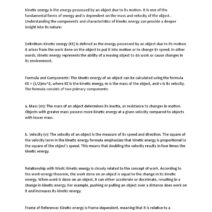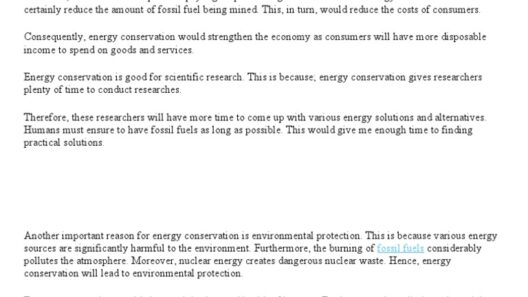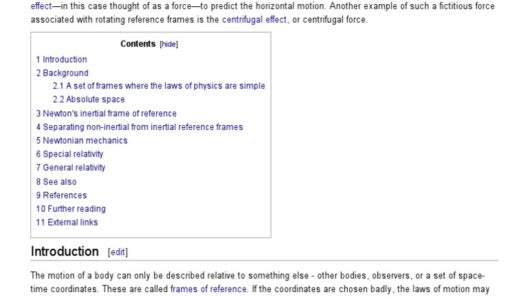Measuring mass is a fundamental component of physics that underpins a multitude of scientific principles. Traditionally, the most direct way to ascertain mass involves the use of scales and balances. However, innovative approaches, particularly those utilizing the conservation of energy, unveil a more abstract yet profoundly enlightening perspective. This method interlaces elegance and precision, akin to a delicate ballet between mass and energy, both of which are intrinsically linked within the vast cosmos.
The conservation of energy principle posits that energy cannot be created or destroyed, only transformed from one form to another. This principle serves as the cornerstone of many innovative techniques for measuring mass. Energy transitions occur in systems under various conditions, but each retains a constant sum of energy. When harnessed properly, this can allow one to extrapolate the mass of an object through ingenious experimental designs.
One of the most fascinating illustrative methods involves the concept of gravitational potential energy. Gravitational potential energy is defined by the equation:
PE = mgh
where PE denotes potential energy, m stands for mass, g is the acceleration due to gravity (approximately 9.81 m/s² on Earth), and h represents the height above a reference point. To measure an unknown mass using this framework, one could elevate a known mass and calculate its potential energy at a given height. By employing an energy transfer approach, the gravitational pull acting on the known mass can provide insights into the mass of a different object situated within the same gravitational field.
Imagine a seesaw poised at the brink of equilibrium. Balancing two masses, one known and one unknown, demonstrates this interplay. When the seesaw is tipped, the gravitational pull accentuates the relationship between mass and height. Should one mass be elevated, we can determine the height necessary to return to balance, thus calculating the unknown mass through this non-traditional method.
Another innovative approach involves utilizing kinetic energy, which is the energy of motion. The formula for kinetic energy is:
KE = 0.5 mv²
where KE symbolizes kinetic energy, m indicates mass, and v serves as the velocity of the object. In scenarios where pendulums oscillate or masses are projected, one can assess the kinetic energy of moving objects when subjected to a force. By determining the velocity at which an object reaches a certain height and calibrating it against a known mass, the unknown mass can be deduced. This process evokes the image of a maestro conducting a symphony; each note of kinetic energy and each oscillation of the pendulum harmonizing to reveal the song of mass.
Moreover, consider the ingenious tool of the spring scale. When a mass is hung from a spring, the spring stretches, and the conflict between gravitational force and restoring force can be leveraged to calculate mass in an innovative style. The restoring force exerted by the spring follows Hooke’s Law:
F = -kx
where F is the force exerted by the spring, k is the spring constant, and x is the displacement from the equilibrium position. By measuring the displacement of the spring when a mass is applied, one can ascertain its weight. Subsequently, using the gravitational constant, this can be converted into mass. It is reminiscent of a dancer’s leap; the precise distance stretched by the spring mirrors the height of a dancer soaring against gravity, gracefully rendering the unknown mass into clarity.
Intriguingly, these methods transcend mere academic exercises; they also empower the instrumentation of various scientific fields. In environmental sciences, for instance, understanding mass through energy conservation plays a critical role in modeling ecosystems and understanding pollutant dispersion. The mass of contaminants can be evaluated in relation to energy changes observed in environmental systems, providing a clearer picture of their impact and aiding in mitigation efforts. Thus, energy conservation methods not only elucidate physical concepts but also extend their utility toward environmental stewardship.
As we harness more innovative physics tricks to measure mass, the energy deluge justifies a philosophical contemplation on the interdependence of the universe. Energy reflects potential pathways, while mass symbolizes the manifestation of substance. The dance of energy and mass, whether amid the exquisite swings of a pendulum, the stretching of a spring, or the heights of gravitational potential, showcases the intricacies of our universe’s tapestry.
Through these innovative approaches, we begin to delineate a path toward a deeper comprehension of mass, energy, and their interplay. Mass isn’t just an isolated quantity confined within the boundaries of matter; it is a dynamic participant in the grand narrative of energy conservation. Each experiment conducted is a revelation, a moment when the veil is lifted, and the world is understood a fraction more, echoing the ancient wisdom that all things are interconnected.
In conclusion, tapping into the conservation of energy for measuring mass not only demonstrates the elegance of physical laws but also serves as a beacon of innovation. The more we explore these intriguing metaphors and tools—be they swinging pendulums, dancing springs, or gravitational interactions—the more we unravel the mysteries and beauty of our physical world. Through understanding the delicate balances and dances of energy and mass, we become better equipped to face the challenges our world presents, paving the way for future discoveries and fostering a deeper appreciation for the science that surrounds us.








